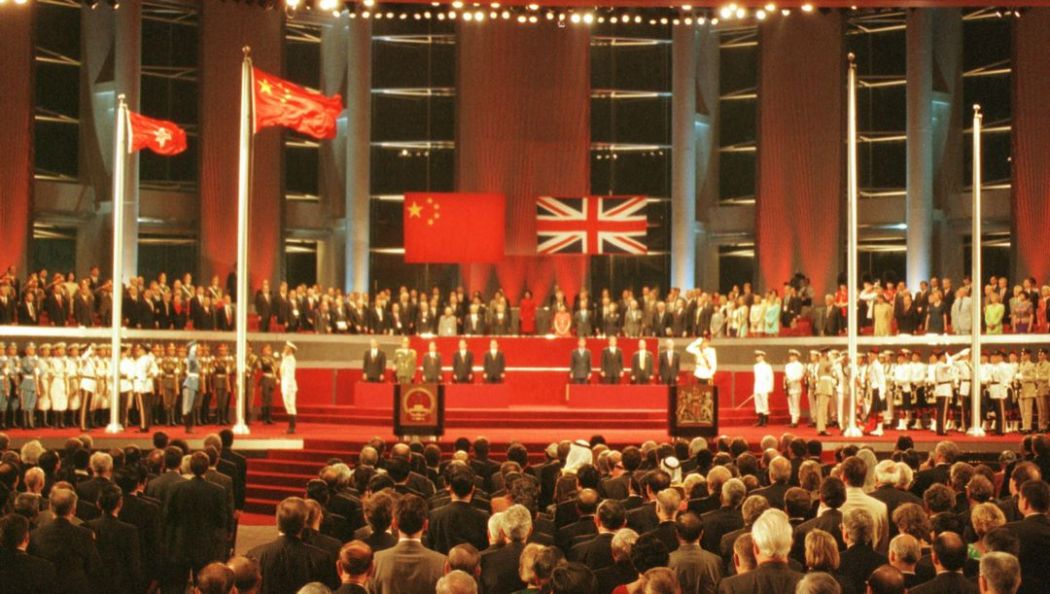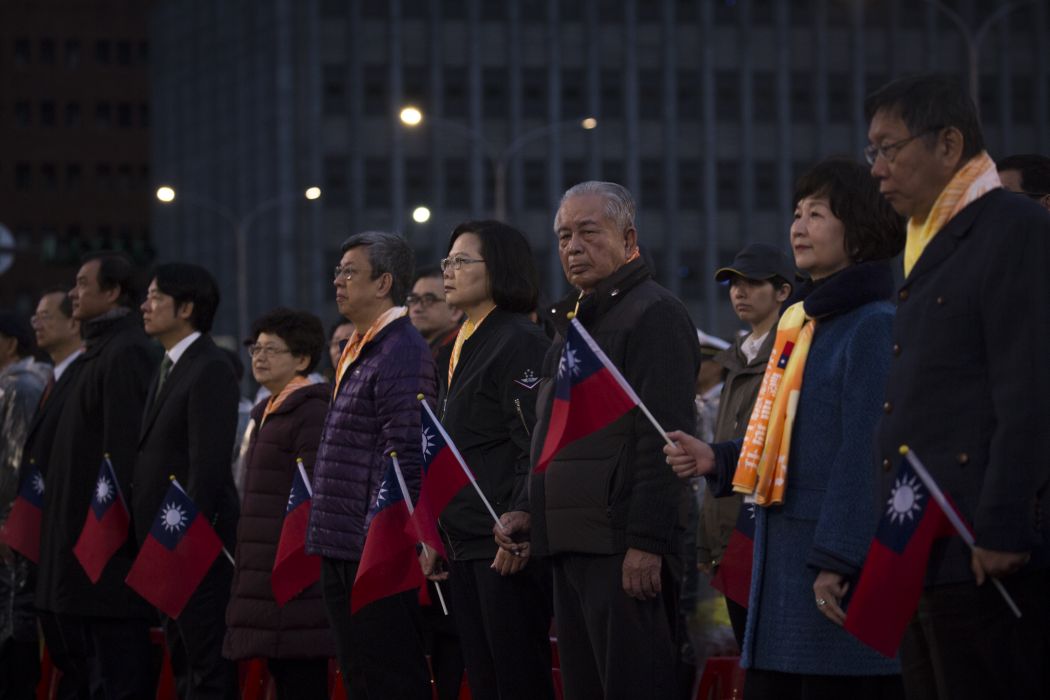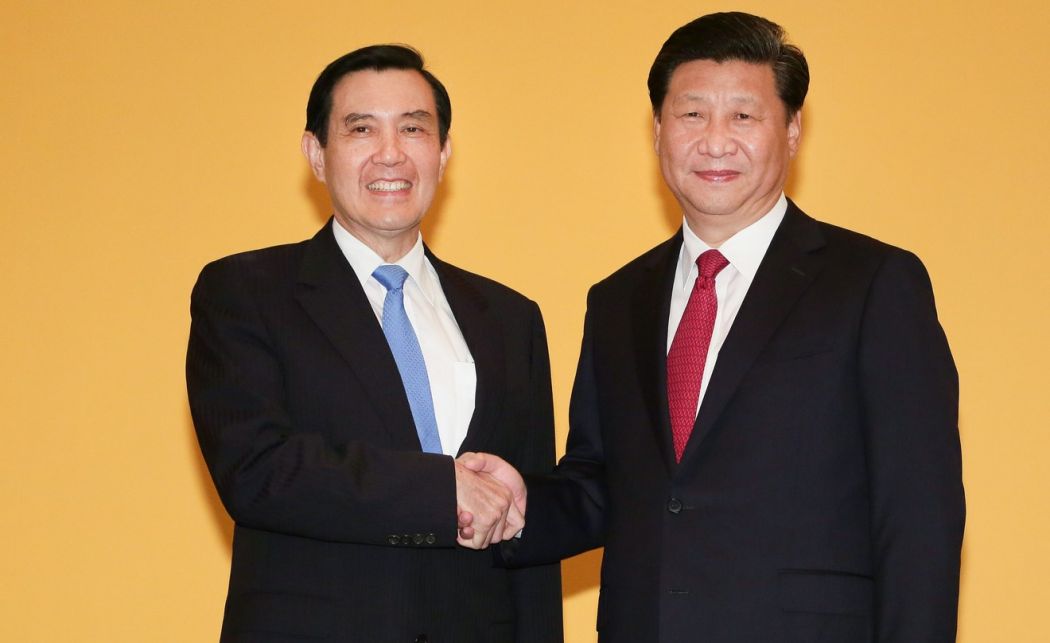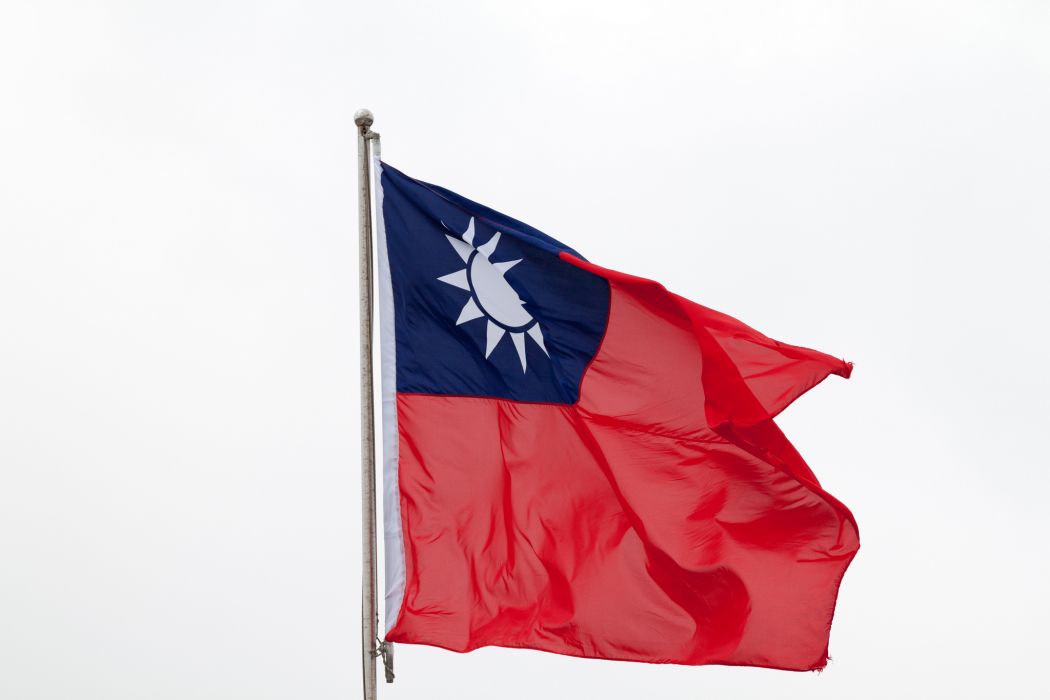Hong Kong is learning what it means to live with mainland definitions of free speech and all its derivatives.
Introducing the proposed new national anthem law, Secretary for Constitutional Affairs Patrick Nip told critical questioners they could still exercise their right to say whatever they want. It’s just that they will have to find some other format because renditions of the national anthem will soon be off limits.
The maximum sentence possible under the new law will be a three-year prison term and a HK$50,000 fine for intentionally insulting, distorting, or otherwise disrespecting the national anthem.
This is to be played at all the usual times and places, with one addition. It must also be played while officials, legislators, and judges are taking their oaths-of-office.

The police will be allowed two years, instead of the usual six months, to file charges against offenders – two years because that’s how long they’ve found it can take to ferret out miscreants from footage recorded by police cameras and others at every demonstration and political event.
This kind of surveillance is also part of Hong Kong’s new reality.
The new law follows from the calamitous 2016 Legislative Council swearing-in-ceremony when some newly-elected Hong Kong legislators added a few insults along with some political slogans to the standard oath-of-allegiance.
Bad behaviour at football matches had also not gone unnoticed. A national anthem law has since been passed and is being enforced throughout the country, with Hong Kong and Macau required to add a similar law to their new post-colonial Basic Law constitutions.
Secretary Nip was explaining the details to Legislative Councillors in preparation for their vote to do so. At least he did better, by placing them in the context of the new mainland-style definitions, than his superior has done.
Chief Executive Carrie Lam has been content throughout the past year to repeat one-line disclaimers like Hong Kong independence has “nothing to do with free speech” or academic freedom, or a free press, or the right to stand as an election candidate.
Talking independence puts people beyond the pale and they consequently cannot be allowed to speak such words without suffering the consequences as required, officials said, by Hong Kong’s Basic Law.

Yet despite this evolving record, or perhaps because of their easy cross-border adaptability, the new definitions are now being put to even more ambitious use.
Disregarding completely all dissenting opinions here, as well as the cross-border push to integrate Hong Kong into the national mainstream on multiple fronts, Beijing is doubling down and has declared its Hong Kong experiment a great success.
The experiment is known by the name of its One Country, Two Systems governing principle and characterised by its two best-known descriptive slogans about “Hong Kong people ruling Hong Kong” with “a high degree of autonomy.”
Especially since the 20th-anniversary celebrations to commemorate Britain’s 1997 departure, Beijing officials have repeatedly lauded the model, saying it would be retained, continuing on indefinitely into the future. There had been much speculation due to an ambiguous 50-year guarantee written into the Basic Law’s Article 5.
And now, according to a major speech by President Xi Jinping on January 2, One Country, Two Systems is also being projected as the model for Taiwan’s inevitable return to the motherland.
The model was actually first introduced, in conceptual form, as a vehicle for reconciliation between China and Taiwan. But the concept was initially rejected by leaders there and then adapted instead for its first trial run during the recovery of British Hong Kong in 1997, followed by Portuguese Macau in 1999.

Now, after 20 years’ of One Country Two Systems, President Xi still seems to think the framework is right for Taiwan. He is no doubt hoping for a smooth Macau-like transition, but more likely Taiwan will reproduce the Hong Kong experience several times over.
President Xi’s vision
Xi Jinping was speaking at the 40th-anniversary event in commemoration of the first major outreach to Taiwan, dating from the new reform era that followed the death in 1976 of Mao Zedong.
On January 1, 1979, Beijing issued a message to “Taiwan compatriots” calling for an end to military confrontation between the two rivals on either side of the Taiwan Strait. The confrontation had continued since the end of the Chinese civil war in 1949. On the same day in 1979, China and the United States established diplomatic relations.
Along with an end to military confrontation, Beijing went further in 1979, suggesting the possibility of peaceful reunification – an offer Taiwan’s leaders at the time refused. But this is an issue that those in Beijing will never forget or abandon, and Xi Jinping is now carrying forward the quest by calling for “complete national reunification.”
President Xi’s 40th-anniversary speech on January 2nd was billed as a five-item elaboration on the dimensions of achieving that goal.
First, it is an aspect of national rejuvenation. Second, the means should be via a “two-systems” plan for Taiwan. Third, the plan must uphold the One China principle. Fourth, it will entail further deepening integrated cross-Strait development. Fifth, reunification aims to realise a sense of common purpose in the form of a common national and ethnic identity shared by all compatriots.

The two sides of the Taiwan Strait are part of One China, said Xi, and no force can deny that fact of history. The seeming contradictions posed by two different political systems could be addressed and problems solved by adopting the One Country, Two Systems model pioneered successfully in Hong Kong and Macau during their transitions from colonial to Chinese rule. The quest will be complete with Taiwan’s return.
The high point of the 40-year hiatus between 1979 and 2019 had come in 1992 when a so-called “consensus” or agreement was reached by representatives of the “two Chinas,” that is, the People’s Republic of China on the mainland and the Republic of China confined to the island of Taiwan.
The government of the latter was then still ruled by the Kuomintang (KMT) or Nationalist Party that had retreated to the island after being defeated in the final 1945-49 civil war battles with the Chinese Communists.
In 1992, the two sides agreed that there is only One China, not two, but left open which was dominant. The two sides could each interpret the One China reality in their own way. Since then, the two sides had developed a thriving relationship on this basis to the benefit of all.
But President Xi put his own gloss on these relations, saying they had proceeded on the basis of maintaining China’s sovereignty and territorial integrity and defeating various kinds of divisive tendencies, like the idea of two Chinas, or One China, one Taiwan, or Taiwan independence. Great victories had been won in the struggles against Taiwan independence and splittism.

Yet Xi did not mention Taiwan’s current ruling party, the Democratic Progressive Party (DPP). Beijing sources routinely categorise and denigrate the DPP as “pro-independence.”
KMT-led governments are known for being more “China-friendly.” They are more inclined to accommodate Beijing’s initiatives and have been Beijing’s main partner in developing the post-1992 cross-Strait relationship.
Many decades have now passed, said Xi. Yet despite all these developments, the division across the Taiwan Strait remains. It should not be allowed to continue from one generation to the next. The two sides are populated by one people. We are all Chinese, all of the same family with a shared “natural kinship and national identity.” Ours is a domestic dispute and should be solved through peaceful means, discussion, and consultation among ourselves. Outsiders have no role to play.
He emphasised the promise of common pride in the achievement of a bright national future, contrasting its possibilities with China’s dark past. The Taiwan question, he said, originated from China’s national weakness and disorder during the 20th century.
Reunification would mark a historic victory over that past and would be a key step in achieving what has become Xi Jinping’s signature goal, namely, the great Chinese dream of “national rejuvenation” – to make China great again and make the country whole again.
The best means of achieving national reunification would be through peaceful consultation and agreement, and in practical terms via the One Country, Two Systems model that had proved so successful in achieving Hong Kong’s transfer from colonial back to Chinese rule.
He elaborated a bit on what he meant by the model, reprising some of the general promises made to Hong Kong at the outset, about the social system and way of life being respected and retained, along with private property and religious beliefs.
The “legitimate rights and interests” of Taiwan compatriots would be “fully protected.” But the historic endeavour would be undertaken on the basis of ensuring China’s sovereignty, security, and developmental interests.
To begin work toward that end, Xi proposed that the mainland and Taiwan embark on formal consultations with representatives from all interested mainland and Taiwan parties and sectors.

This calls to mind the Beijing-dominated 1980s Consultative Committee that gathered and sorted opinions here for Beijing’s reference while officials there oversaw the drafting of Hong Kong’s Basic Law to their own specifications.
The Taiwan consultations would be based on the foundations that had been created by the 1992 Consensus and opposition to Taiwan independence, said Xi. Presumably, that would mean no seat at the table for Taiwan’s ruling Democratic Progressive Party (DPP).
The aim would be to achieve reunification by peaceful means, but Xi did not rule out the use of force, if necessary, to target foreign interventionists and separatist dissenters.
Describing the same cross-border development strategy being used to integrate and absorb Hong Kong into the national mainstream, Xi pledged to continue promoting cross-Strait economic cooperation, increase the flow of free trade, create a common market, and develop infrastructure linkages to include the exchange of energy and other resources and shared industrial standards.
Taiwan responses
What was Xi Jinping thinking? In Beijing, they follow every twist and turn of Hong Kong and Taiwan politics, so he would have known beforehand that, phrased as it was, his speech would only be appreciated by committed nationalists wherever they might be.
Taiwan President Tsai Ing-wen of the DPP had actually pre-empted Xi’s speech with one of her own on New Year’s Day. She, too, spoke of sovereignty, identity, and security, saying cross-Strait exchanges are fine.
But Taiwan must be wary of over-dependence on investment and trade with the mainland, and wary also of “vague” political promises.

Toward that end, she challenged Beijing to respect Taiwan’s political system with “four must” demands. Beijing must face the reality of the Republic of China’s existence in Taiwan. Beijing must respect the commitment of Taiwan’s 23 million people to freedom and democracy. Beijing must deal peacefully with cross-Strait differences on the basis of equality. And any cross-Strait negotiations must be conducted by governments or their authorised agencies.
Immediately after President Xi’s speech, Tsai sent another message to Beijing, categorically rejecting a Hong Kong-style One Country, Two Systems model for reunification. She said Taiwan would never accept it.
Tsai also said Xi Jinping’s speech explained why she had never accepted the 1992 Consensus, because, according to Xi’s description, it is tantamount to Hong Kong-style One Country, Two Systems.
That means one country as defined by the Beijing government and under its control. She called on Beijing to consider its own system first and introduce major democratic reforms if it wanted to win Taiwan’s trust.
Taiwan’s Mainland Affairs Council also issued a statement saying the One Country, Two Systems policy being implemented in Hong Kong is depriving people there of their freedom and undermining the region’s rule of law, in a way the people of Taiwan would never accept.
Not satisfied with all this, pro-independence hardliners in Tsai’s party issued an angry statement of their own. They called on her not to seek a second term by standing in the coming 2020 presidential election.
Their open letter was published in Taiwan on January 3. They don’t like her careful effort to avoid antagonising Beijing by avoiding divisive direct references to Taiwan independence. The angry old men of the DPP want a stronger voice to speak for them.
Representatives of Taiwan’s Kuomintang (KMT) party, that is hoping to regain the presidency in 2020, weighed in as well. They said Tsai was incorrect in her understanding of the 1992 Consensus, but their views were not likely to be much more pleasing to Beijing ears.

The KMT’s current chairman, Wu Den-yih, said the 1992 Consensus was simply an agreement that both sides could freely interpret One China to mean what they liked. But it did not mean then what Xi Jinping and Tsai Ing-wen are both saying it means now. The 1992 Consensus and one-country, two-systems are not one and the same thing.
Ironically, one of the Taiwan responses that Xi would find most objectionable came from one of Taiwan’s pro-unification groups whose members lamented the negative DPP and KMT reactions.
But this group, calling itself the Grand Alliance for China’s Reunification, also rejected the Hong Kong model, because it reduced Hong Kong to Beijing’s subordinate. The solution should instead be unification under a federal system, the United States of China, with each side enjoying equal status.
In Beijing’s political lexicon, federalism is every bit as threatening as independence to the concept of a unified China governed under centralised Communist Party rule.

Probably, Xi Jinping knew very well what the Taiwan responses would be. Beijing strategists are keen observers of Western-style electioneering, especially as practised here and in Taiwan, and they keep careful track of who is saying what.
So, they know that influencing public opinion is best attempted at election time when more people are paying attention to politics. And everyone knows that Tsai Ing-wen’s opponents are looking to replace her in the 2020 election.
By coming out with so forceful a statement now, Xi Jinping is in effect throwing his hat in the ring, declaring his interest in the outcome and hoping to set the tone for Taiwan’s 2020 political debates.
By appealing to nationalist sentiments and denouncing all “separatist” tendencies, he can hope to sway Taiwan voters in the direction of an even more careful candidate than Tsai Ing-wen, or better yet a sympathetic China-friendly KMT successor who will not be so inclined to resist Beijing’s well-funded cross-Strait initiatives, with all the economic benefits they can bring.
